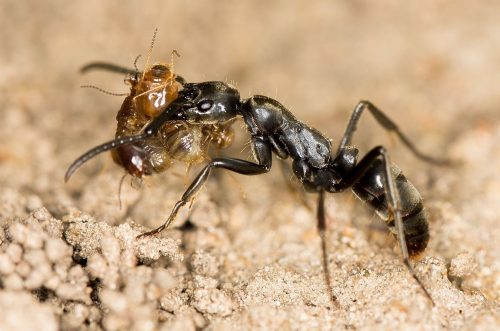How termites help mitigate the effects of rainforest drought
When termites come up in everyday conversation, horror stories of tented houses and damaged house foundations usually soon follow. However, of all the termite species in the world, only four percent are actually pests. Rather, most termites help maintain healthy ecosystems and soil integrity. This is what led researcher Louise Ashton of the University of Hong Kong and a group of scientists from around the world to fly to Borneo and study the effects of termite populations on tropical rainforest ecosystems.
The researchers set about creating a large-scale experiment to test how native termite species interact with the ecosystem. In order to see the difference between environments with and without termite populations, the scientists killed off termite populations in several controlled plots of land. First, they set up four eighty-by-eighty-meter plots in the rainforest and physically removed all termite mounds within those areas. They then placed toilet paper dipped in low concentrations of insecticide across the plots. Since toilet paper is an appealing meal for termites, the insects ate the paper with insecticide and brought it back to their nests, thus effectively suppressing most of the termite population in the experimental zones.
Ready to watch for an effect on the ecosystem, the timing of their experiment proved serendipitous. “We had originally intended to understand termites and ecological processes, but inadvertently we had data on termites during a major drought,” Aston said. The researchers soon realized that they had set up an experiment to collect data right in time for the 2015 El Niño drought, one of the strongest and most damaging droughts in recent history.
The initial results shocked the researchers. During the drought, termite numbers doubled. “Everything else in the forest slows down in the drought, but the termites thrived,” Ashton explained. According to Aston, the termites acted as soil engineers. “They bring clay from underneath the soil to the surface to make the sheeting that they move around,” Ashton said. This results in greater soil heterogeneity and more soil moisture compared to the plots where termites were suppressed.
Soil moisture and heterogeneity are key features of rainforest ecosystems intricately tied to biodiversity. Previous research shows that seedlings in the rainforest usually start growing around five centimeters under the soil surface, where researchers in this study noted that termites had a direct impact. To study the effect of termites on seedling survival, they conducted a transplantation experiment using liana seedlings in both the control and termite suppression plots. They quantified the number of seedlings that survived in soil with and without termite suppression and found that the control plots with termites had a significantly higher seedling survival rate during the drought compared to termite suppression plots. In this way, termites help the rainforest maintain a healthy ecosystem even during dry spells.
In order to confirm that the differences in the initial experiment were due to the drought and not some other potential factor, the scientists conducted a second experiment the following year when the Borneo rainforests experienced normal rainfall. The findings of this second study confirmed the results of the drought experiment. There was no significant difference in the seedling survival rate of the control plots versus termite suppression plots during non-drought conditions, suggesting it was the doubled termite population that benefitted seedling growth during the drought. While it is not yet known exactly why termites thrive in drought conditions, tunneling and foraging ability in drier ground might play a role.
This was the first large-scale termite suppression experiment ever to be conducted, serving as a model for future work in discovering the profound impact little critters have on entire ecosystems. While this study focused on the rainforests of Borneo, there is further research to be done. “There’s significant remaining work on other parts of the landscape, like agricultural systems or other disturbed areas, to see if they have lost this insurance policy that the termites confer,” Ashton said. Understanding how organisms contribute to an ecosystem’s response to extreme weather conditions has the potential to affect environmental policy and shape the way we interact with rainforests in the years to come.

